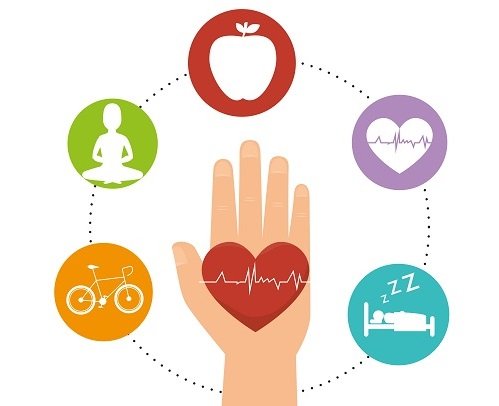The Practice of Digital Minimalism: Optimizing Personal Productivity and Well-being
The proliferation of digital technologies has engendered an unprecedented level of information and data, leading to a pervasive sense of digital clutter and overwhelm. This article explores the concept of digital minimalism, a strategic approach to managing digital possessions and interactions to enhance productivity and improve overall well-being. Key concepts include information overload (the state of being overwhelmed by excessive information), digital minimalism (a mindful approach to curating digital resources), and cognitive load (the amount of mental effort required to perform a task). We will examine how these concepts intersect and how practical strategies can mitigate the negative impacts of excessive digital engagement.
- Establishing a Digital Baseline: Initiating a digital decluttering process necessitates a thorough assessment of existing digital assets. This involves the systematic deletion of unused applications, unsubscribing from irrelevant newsletters, and archiving or deleting superfluous emails. This initial phase aligns with the principles of "zero-based budgeting" – a financial strategy that starts from scratch – applied to the digital realm, discarding obsolete information to create a clean foundation for future management.
- Implementing a Robust File Management System: Efficient organization of digital files is paramount. Implementing a hierarchical folder structure with descriptive labels facilitates efficient retrieval and minimizes wasted search time. This approach leverages the principles of information architecture, optimizing discoverability and reducing cognitive load associated with locating specific files. This strategy mirrors the effectiveness of a well-organized physical filing system.
- Curating Social Media Networks: Social media platforms, while offering valuable connectivity, can contribute significantly to digital clutter and information overload. A critical evaluation of connections, unfollowing or unfriending individuals who do not provide positive value or contribute to meaningful interaction, is crucial for maintaining mental well-being. This action echoes the concept of boundary setting, a necessary element for managing relationships and limiting unnecessary exposure to information.
- Employing Time Blocking Techniques: Instead of reactive multitasking, strategic time blocking enhances focus and efficiency. Allocating specific time periods for email correspondence, message responses, and social media engagement limits distractions and promotes more mindful engagement. This approach utilizes time management principles similar to the Pomodoro Technique, promoting focused work intervals and structured breaks.
- Optimizing Notification Management: Excessive notifications contribute to interruptions and fragmentation of attention. Actively limiting notifications to essential channels minimizes distractions and enhances concentration. This directly addresses the psychological principle of interruption cost, mitigating the negative impact of frequent disruptions on cognitive performance.
- Adopting a Regular Decluttering Schedule: Consistent digital decluttering, scheduled on a monthly or quarterly basis, prevents the accumulation of unwanted digital assets and maintains a streamlined digital environment. This mirrors the principles of preventive maintenance, anticipating potential problems (e.g., hard drive space issues, information overload) and proactively addressing them.
- Leveraging Productivity Tools: Utilizing dedicated digital tools for organization and task management (e.g., note-taking applications, project management software) optimizes workflow and reduces cognitive load. This is a direct application of technological solutions to improve efficiency, mirroring advancements in other fields utilizing automation to improve processes.
- Prioritizing Digital Mindfulness: Incorporating practices that encourage disconnection from digital devices fosters mental rejuvenation and stress reduction. Activities such as mindfulness meditation, spending time in nature, or engaging in hobbies unrelated to technology promote mental clarity and well-being. This reflects the importance of applying mindfulness principles to mitigate the negative impacts of technology overuse.
- Automating Repetitive Tasks: Automating repetitive tasks, such as email filtering, social media scheduling, and file backups, frees up mental and physical resources for more engaging and fulfilling activities. This is a direct application of automation principles – leveraging technology to improve efficiency and minimize human intervention for repetitive processes.
- Streamlining Online Subscriptions: Regularly reviewing and unsubscribing from unnecessary online services prevents the accumulation of unwanted subscriptions and reduces financial and informational clutter. This promotes conscious consumerism, aligning with practices of efficient resource management.
- Implementing a Robust Data Backup Strategy: Implementing a comprehensive data backup system safeguards against data loss and ensures the security of valuable digital assets. This aligns with the principles of risk management, proactively mitigating the potential consequences of unforeseen data loss scenarios.
- Promoting Positive Online Interactions: Cultivating a mindful approach to online interactions fosters a positive and supportive digital environment. This aligns with the broader societal goal of fostering a culture of digital citizenship, promoting ethical and responsible online behaviors.
- Applying the "One-In, One-Out" Rule: Maintaining a balanced digital ecosystem requires conscious control over the acquisition of new digital assets. The “one-in, one-out” rule ensures that the addition of new apps or subscriptions is offset by the removal of obsolete ones. This is an application of the principle of inventory management, ensuring a controlled and sustainable digital environment.
- Establishing Technology Boundaries: Defining specific times or locations for technology use promotes a healthy balance between digital and offline activities. This principle mirrors the concept of work-life balance, emphasizing the importance of setting boundaries to prevent technology from negatively impacting other aspects of life.
- Realizing the Benefits of a Streamlined Digital Life: The reduction of digital clutter translates to increased productivity, enhanced focus, and improved mental well-being. This allows for more time to focus on personal goals and meaningful relationships, promoting overall life satisfaction and increased quality of life.
Conclusions and Recommendations: Digital minimalism offers a powerful framework for navigating the complexities of the digital age. By strategically managing information, interactions, and technologies, individuals can significantly reduce stress, improve productivity, and enhance overall well-being. Future research should focus on quantitative studies to measure the correlation between digital minimalism practices and metrics of mental health, productivity, and life satisfaction. The application of digital minimalism principles should be further explored across diverse demographic groups and professional settings. The development of user-friendly tools and applications designed to facilitate digital decluttering and mindful technology use would also be beneficial.
Reader Pool: What are the potential ethical considerations and challenges in implementing digital minimalism in diverse socio-economic contexts?




No comments yet. Be the first to share your thoughts!